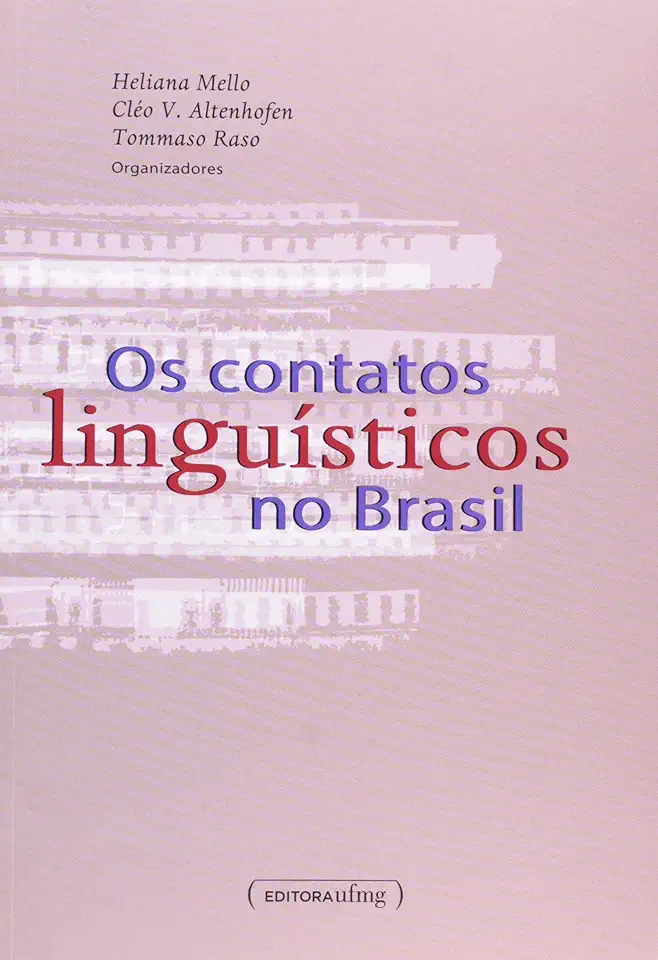
Linguistic Contacts in Brazil - Heliana Mello Cléo V Altenhofen Tommaso Raso
Linguistic Contacts in Brazil: A Journey Through the Portuguese Language
A Tapestry of Linguistic Influences
Brazil, a nation renowned for its vibrant culture and rich history, stands as a testament to the power of linguistic contact. Throughout the centuries, the Portuguese language, the official language of Brazil, has undergone a remarkable transformation, shaped by the diverse influences of indigenous languages, African languages, and European languages. In "Linguistic Contacts in Brazil," Heliana Mello, Cléo V Altenhofen, and Tommaso Raso embark on an enthralling journey, exploring the intricate tapestry of linguistic interactions that have woven the fabric of Brazilian Portuguese.
The Indigenous Legacy: A Symphony of Sounds
The indigenous languages of Brazil, spoken by the native inhabitants of the land, have left an indelible mark on the Portuguese language. From the melodic intonations of Tupi-Guarani to the rhythmic patterns of the Amazonian languages, indigenous influences permeate the very essence of Brazilian Portuguese. Words like "abacaxi" (pineapple), "caipirinha" (a traditional cocktail), and "jacaré" (caiman) are just a few examples of the rich vocabulary that has been borrowed from indigenous languages.
The African Imprint: A Rhythmic Fusion
The arrival of African slaves in Brazil brought with it a vibrant infusion of African languages and cultures. The Portuguese language, in its embrace of these influences, underwent a profound transformation. Rhythmic patterns, expressive intonations, and a wealth of new words enriched the linguistic landscape of Brazil. Words like "samba" (a popular dance and music genre), "candomblé" (an Afro-Brazilian religion), and "capoeira" (a martial art form) bear witness to the enduring legacy of African languages in Brazil.
The European Encounter: A Symphony of Ideas
The arrival of European settlers, particularly the Portuguese, marked a new chapter in the linguistic history of Brazil. The Portuguese language, as the language of the colonizers, gained prominence and became the dominant language of the land. However, the interaction between Portuguese and other European languages, such as French, English, and Italian, led to a fascinating exchange of ideas and linguistic elements. Words like "restaurante" (restaurant), "computador" (computer), and "telefone" (telephone) are testaments to the impact of European languages on Brazilian Portuguese.
A Living Language: Constant Evolution
"Linguistic Contacts in Brazil" not only delves into the historical influences that have shaped Brazilian Portuguese but also explores the dynamic nature of language itself. The authors highlight how the Portuguese language in Brazil continues to evolve, influenced by globalization, technological advancements, and the ever-changing social landscape. New words, expressions, and linguistic trends emerge constantly, reflecting the vitality and adaptability of the language.
A Treasure Trove of Linguistic Insights
"Linguistic Contacts in Brazil" is a treasure trove of linguistic insights, offering readers a comprehensive understanding of the Portuguese language in Brazil. With its engaging narrative, meticulous research, and insightful analysis, this book is a must-read for linguists, language enthusiasts, and anyone fascinated by the intricate tapestry of human communication.
Embark on a Linguistic Adventure
Join Heliana Mello, Cléo V Altenhofen, and Tommaso Raso on an unforgettable journey through the linguistic landscapes of Brazil. Discover the fascinating stories behind the words you speak, and gain a deeper appreciation for the power of language to unite, inspire, and transform. "Linguistic Contacts in Brazil" is an invitation to explore the rich tapestry of linguistic interactions that have shaped a nation and its people.